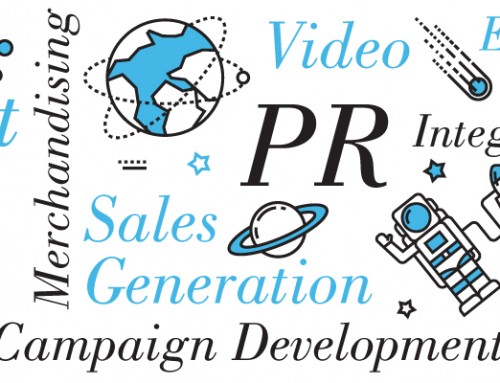In a nutshell SEO or search engine optimisation is the practice of affecting the visibility of a website or a web page in a search engine’s “natural” or un-paid (organic) search results. This terminology is quickly becoming outdated as a means to describe what digital marketing companies actually offer.
You see in the past SEO centred on improved rankings and thus greater levels of traffic to your website, it seemed like a simple formula. However this formula lent no weight to the quality of that traffic in relation to actual business objectives. Things like conversions, revenue and repeat business; ultimately the KPIs that affect your bottom line.
Nowadays SEO or, more accurately, digital marketing takes a multi-faceted approach when it comes to promoting your business on the web. This discipline focuses on building high quality content, to meet the searchers intent, on optimising the user experience, to aid visitors and increase conversions, and on promoting your brand amongst well know media outlets.
Which brings us to the why. The short answer: Digital marketing in an investment with a high return. Increasing the visibility of your website within search results for topics pertinent to your target audience is one of the most cost effective ways to bring new customers to your business.
Digital marketing is one of the best ways to gain new customers because it’s rooted in user intent. Unlike traditional marketing, which are based on interrupting a prospect with a sales pitch, digital marketing seeks to meet the user’s intent with a message that correlates with their needs.
Building your brand is a key component of both offline and online marketing. With digital marketing you’ll earn ‘mind share’ through understanding the market scope and knowing where your content can have the most value for your customers. What’s more, every element of a digital marketing campaign can be measured, evaluated and adapted for increasing returns.
Digital Marketing
Marketing is changing and the behaviour of your customer has already changed. No longer can a TV ad, radio ad or any outbound marketing guarantee success. The reason for this? Customers are smarter! They have so much choice available and they can easily tune out of your marketing message.
Measuring success of outbound has always been difficult and sometimes impossible. People don’t want your business message pushed to them, they would rather figure it out on their own.
Digital marketing is about creating content that your target market would pay for but you give it to them for free. Take a look at your visitor data and you will see that a high percentage of your traffic leaves without performing any further action.
This can be for many reasons, perhaps they were in research mode and not ready to buy. Digital marketing helps your website move your visitors through the marketing funnel and turn more of them into customers.
The Bigger Picture
SEO, as it was once known, is no longer about optimising for individual keywords or phrases. It’s about providing content that solves a problem and meets the searchers requirements. That problem might be an informational gap, a how-to guide or some amazing imagery.
This content is tracked not based on one or two keywords but hundreds of keywords relevant to the topic at hand, providing an overall level of visibility or share of voice. Gap analysis also works to highlight key content areas not currently being addressed through either your own or competitor websites.
There are natural benefits to operating in this manner. Content that solves a problem when seeded out to the right locations typically garners social sharing and backlinks before any offsite promotion has even begun.
Furthermore offsite promotion is no longer the acquisition of targeted links to your website. Offsite promotion leverages local press and influential bloggers to build your brand. This not only increases your visibility within search engines but also provides referral traffic for your website, something more akin to traditional PR but with an added level of targeting.
KPI’s
At deVilliers Communications our KPIs reflect areas that actually add value to your business. We’re not so interested in leading indicators, such as links and rankings. Instead we choose to focus on marketing KPIs, like visits, and business KPIs, like conversions, average order value and retention.
Timeframes
How long it will take to hit targets and achieve specific results has always been one of the trickier questions when it comes to planning a digital marketing campaign. Of course the answer will be specific to your particular situation; for example it can take a brand new website six months to start showing significant visibility improvements whilst an established web property might see the same results in just three months. Your competition, market sector and time allocation for your campaign will also be pivotal factors when discussing the time frame.
One of our key business objectives at deVilliers Communications is client retention and because of this we perform offsite promotion in a gradual manner thus maximising the long term success of your campaign. Having said that we’re also a multi-faceted digital marketing company, which means while it might take three to six months for you to see a real boost to the bottom line from search we’ll already be driving increased traffic from targeted referral sources and increasing conversions.
A Word on Search Engines
Right, back to basics now. Search engines, specifically Google which has a massive majority market share in the UK, use more than 200 factors to determine the best results for a particular search query. Holistically the aim of the search engine algorithms are to provide the end user with exactly what they’re looking for, so if you search “buy XYZ” you’ll get an ecommerce website or “how to make XYZ” you’ll get an informational website.
With that said there are two major algorithm updates worth knowing about which have changed the way SEO, in the traditional sense, is now conducted. This information is provided more as a means to keep you in the loop than anything else although it should be noted that previous, positive, SEO work could now be working against your website.
The Penguin Algorithm
On April 24, 2012, Google announced “Another Step to Reward High Quality Sites”, an algorithm change aimed at fighting against webspam. The algorithm change was first called “The Webspam Algorithm” but eventually began to go by the name of “Penguin”. This algorithm severely affected sites that had widespread keyword stuffing and participation in link schemes. Matt Cutts, head of webspam at Google, eventually admitted on Twitter that links are “a primary area to monitor” when you have been affected by Penguin.
One of the primary causes of Penguin is when sites create easily made links containing keywords as anchor text from low quality places such as article marketing sites, bookmarks and do-follow comments.
The Panda Algorithm
The Panda Algorithm was created by Google in an attempt to cause low quality sites to be displayed much lower in the search results. When Panda first hit, it was an unnamed algorithm. Many named it the “Farmer update” as it seemed to be aimed at content farms that ranked well as a result of scraping content from other sites.
Sites affected by Panda have issues with on page quality as opposed to the quality of their links as in Penguin and Unnatural Links penalties. Sites that have been affected by Panda often have significant amounts of duplicated content (either on their own site or more commonly, from other sites) and also thin content. Thin content is usually a page that consists of very few words.
If a site contains a lot of duplicate and thin content then Google sees little reason to show this site prominently in its search results. An entire site can be severely demoted because of Panda even if only parts of the site have duplicate and thin content.
Communicating our Performance
We love to create monthly reports; for us it’s an easy to reference historical record of exactly what work has been undertaken for each and every campaign that we run and for you it provides complete transparency on the services we provide.
If we’ve not already sent an example report your way please feel free to give us a nudge and we’ll be more than happy to do so. That way you’ll know exactly what to expect and there won’t be any hidden surprises!
To discuss a digital marketing plan, contact us today






